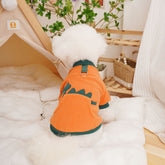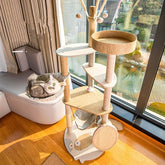Top 10 Best Cat Foods for Your Feline Companion: A Comprehensive Guide
Table of Contents
- Key Highlights:
- Introduction
- The Importance of Nutrition in Cat Food
- Top 10 Best Cat Foods
- Emerging Trends in the Cat Food Industry
- Choosing the Right Cat Food for Your Feline Friend
- FAQ
Key Highlights:
- The right cat food is crucial for maintaining your cat's health and well-being.
- The list includes veterinarian-approved options and those formulated for specific health needs.
- Emerging trends in cat food reflect a shift towards high-protein, grain-free, and natural ingredients.
Introduction
Choosing the right food for your cat is one of the most significant decisions a pet owner can make. With an array of options available, from dry kibble to wet food, understanding what meets your cat's nutritional needs is essential. The food you select can significantly impact your cat's health, longevity, and overall happiness. This article delves into the top ten cat foods currently recommended for their quality ingredients and health benefits, while also exploring emerging trends in the cat food industry that may influence your choice.
The Importance of Nutrition in Cat Food
Understanding the nutritional needs of your cat is paramount. Cats, being obligate carnivores, require a diet primarily composed of animal proteins. Unlike dogs, they cannot thrive on a vegetarian diet. The right balance of proteins, fats, carbohydrates, vitamins, and minerals is crucial for various bodily functions, from maintaining a healthy weight to supporting their immune system.
Essential Nutrients for Cats
- Proteins: Essential for muscle growth and repair.
- Fats: Provide energy and support skin and coat health.
- Carbohydrates: While not as crucial, they can provide energy and fiber.
- Vitamins and Minerals: Vital for overall health, these nutrients support metabolism, bone health, and more.
Top 10 Best Cat Foods
Here’s a curated list of the top ten cat foods that meet high standards for quality and nutrition:
1. Royal Canin Veterinary Diet Urinary SO Dry Cat Food
This veterinarian-approved formula is specifically designed to support urinary health in cats. It helps prevent urinary crystals and stones, common issues in felines, while providing a balanced mix of nutrients for overall health.
2. Hill’s Science Diet Adult Indoor Chicken Recipe Dry Cat Food
Tailored for indoor cats, this formula features high-quality chicken protein to foster lean muscle mass. Additionally, it contains antioxidants to bolster the immune system and natural fibers to help prevent hairballs.
3. Purina Pro Plan Focus Adult Urinary Tract Health Formula Cat Food
This food is crafted to support urinary tract health in adult cats. It includes omega-6 fatty acids and antioxidants to enhance overall well-being while maintaining a healthy urinary pH.
4. Blue Buffalo Wilderness Indoor Chicken Recipe Grain-Free Dry Cat Food
A grain-free option that aligns with a cat's natural dietary needs, this food uses real chicken as its primary ingredient and includes a mix of antioxidants and fatty acids for skin and coat health.
5. Wellness CORE Grain-Free Indoor Chicken & Turkey Recipe Dry Cat Food
This high-protein grain-free formula features chicken and turkey as its first ingredients, supplemented with superfoods like spinach and kale, along with probiotics for improved digestive health.
6. Orijen Cat & Kitten Grain-Free Dry Cat Food
Mimicking the natural diet of cats, this biologically appropriate formula consists of fresh meats, fruits, and vegetables, along with probiotics to enhance digestibility.
7. Instinct Original Grain-Free Recipe with Real Chicken Freeze-Dried Raw Coated Dry Cat Food
This grain-free formula features real chicken as the first ingredient and is coated with freeze-dried raw meat for added flavor and nutrition. Its formulation is designed to support overall health.
8. Taste of the Wild Canyon River Grain-Free Dry Cat Food
Inspired by the natural diets of wild cats, this formula contains real trout and smoked salmon, with additional fruits and vegetables for nutrition and probiotics for digestive health.
9. Rachael Ray Nutrish Natural Chicken & Brown Rice Recipe Dry Cat Food
Made with real chicken and brown rice, this natural formula promotes overall health without artificial flavors or preservatives, making it a wholesome choice for your cat.
10. Iams ProActive Health Indoor Weight & Hairball Care Dry Cat Food
Formulated for indoor cats prone to weight gain, this option includes L-carnitine for weight management and natural fibers to help control hairballs, along with omega fatty acids for healthy skin.
Emerging Trends in the Cat Food Industry
The cat food industry is evolving, reflecting changing consumer preferences and an increased understanding of feline nutrition. Here are some notable trends shaping the landscape:
Grain-Free Formulas
With many cat owners opting for grain-free diets, brands are responding by developing formulas that mimic natural feline diets while reducing the risk of food allergies and sensitivities.
High-Protein Diets
There’s a noticeable trend towards high-protein diets, which are essential for maintaining lean muscle mass and overall feline health. These diets often incorporate quality meats, ensuring that protein is a primary ingredient.
Limited Ingredient Diets
Limited ingredient diets cater to cats with specific sensitivities or allergies, offering a simplified ingredient list to help identify and eliminate potential triggers for adverse reactions.
Raw Food Diets
The raw food movement has gained traction among cat owners seeking to replicate their pet's natural hunting diet. These diets typically consist of raw meat, bones, and organ meats, offering a nutrient-rich option for feline nutrition.
Probiotics and Digestive Health
Recognizing the importance of digestive health, many manufacturers are incorporating probiotics into their formulas. These beneficial bacteria can enhance nutrient absorption and improve overall gut health.
Weight Management Formulas
With rising obesity rates among cats, many brands are developing weight management formulas designed to help cats maintain a healthy weight, featuring balanced nutrition and lower calorie content.
Natural and Organic Ingredients
There is an increasing preference for cat foods made with natural and organic ingredients. Pet owners are gravitating towards products free from artificial additives, opting instead for wholesome, recognizable ingredients.
Choosing the Right Cat Food for Your Feline Friend
When selecting a cat food, consider your cat’s specific dietary needs, age, and any health concerns. Consulting with a veterinarian can offer personalized guidance tailored to your cat's unique requirements.
Factors to Consider
- Age: Kittens, adults, and senior cats have different nutritional needs.
- Activity Level: Indoor cats may require different formulations than outdoor or active cats.
- Health Conditions: Cats with specific health issues may benefit from specialized diets.
- Taste Preferences: Cats can be picky eaters; finding a flavor they enjoy can be essential for successful feeding.
FAQ
What should I look for on a cat food label?
Look for high-quality protein sources as the first ingredient, followed by a balance of fats, carbohydrates, vitamins, and minerals. Avoid foods with excessive fillers or artificial additives.
Can I feed my cat a grain-free diet?
Yes, many cats thrive on grain-free diets, but it’s essential to ensure that the food still contains adequate protein and other necessary nutrients.
How often should I feed my cat?
Most adult cats benefit from being fed twice daily, while kittens may require more frequent meals. Always check with your veterinarian for specific recommendations based on your cat's needs.
What are the signs of food allergies in cats?
Common signs include itching, hair loss, gastrointestinal issues, and skin irritations. If you suspect food allergies, consult your veterinarian for guidance on dietary changes.
Is it necessary to transition my cat to a new food gradually?
Yes, transitioning to a new cat food gradually over a week can help prevent digestive upset. Start by mixing a small amount of the new food with the current food and gradually increase the proportion of the new food.
What if my cat refuses to eat the new food?
Cats can be picky eaters. If your cat refuses new food, try mixing it with their favorite treats or consult your veterinarian for alternative options.
Choosing the right cat food is a vital aspect of cat ownership that can profoundly affect your feline's health and happiness. By understanding the options available and staying informed about industry trends, you can make choices that will lead to a healthier, happier life for your beloved pet.





